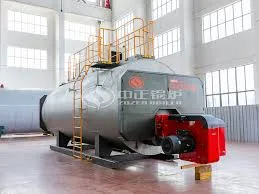Novemba . 12, 2024 13:20 Back to list
casting of iron and steel
Casting of Iron and Steel An Overview
Casting is a process that has been utilized for thousands of years, fundamentally shaping the production of metal objects and structures. Among the various metals that can be cast, iron and steel occupy significant positions due to their unique properties and versatility in applications. This article delves into the casting processes, types, advantages, and applications of cast iron and steel.
Types of Casting Processes
The casting of iron and steel can be performed using several methods, each with distinct advantages and suitable applications. The most common casting processes include
1. Sand Casting This is perhaps the most widely used method due to its versatility and cost-effectiveness. In sand casting, a pattern made of wood, metal, or plastic is placed into a sand mold, which is then packed around the pattern. Once the mold is formed, the pattern is removed, and molten iron or steel is poured into the cavity. After cooling, the mold is broken away to reveal the cast part.
2. Investment Casting Also known as lost-wax casting, this method involves creating a wax pattern, coating it with a ceramic material, and then melting the wax away. This technique is particularly suitable for producing intricate shapes and fine details, making it ideal for components in the aerospace and medical industries.
3. Die Casting This is a process mainly used for non-ferrous metals but also applicable to certain types of steel. Die casting involves forcing molten metal into a steel mold under high pressure. This method is favored for mass production of small and complex parts due to its high dimensional accuracy and smooth surface finish.
4. Continuous Casting Used primarily in the steel industry, continuous casting is a method where molten steel is poured into a mold and then continuously withdrawn, enabling the production of long sections of steel shapes, such as slabs, billets, or blooms. This process enhances productivity and minimizes waste.
Advantages of Casting Iron and Steel
The casting process offers several advantages that make it a preferred method for producing components in various industries
casting of iron and steel

- Complex Geometries Casting allows for the production of intricate shapes that would be impossible or costly to manufacture using other methods, such as machining or forging.
- Material Efficiency The ability to mold metal into nearly finished forms can significantly reduce waste material, making casting a cost-effective choice.
- Large Components Casting can facilitate the creation of large and heavy components, such as engine blocks and structural beams, which are crucial in industries like automotive and construction.
- Diverse Alloys Both iron and steel can be alloyed with various elements during the casting process to enhance their properties, resulting in materials that exhibit improved strength, corrosion resistance, or heat resistance.
Applications of Cast Iron and Steel
The versatility of cast iron and steel makes them invaluable in numerous applications. Cast iron, known for its excellent fluidity, wear resistance, and castability, is widely used in construction (e.g., pipes, manhole covers), automotive parts (e.g., engine blocks), as well as cookware (e.g., frying pans, dutch ovens).
On the other hand, cast steel is favored for applications requiring high strength and ductility. Applications include structural components, heavy machinery, and equipment used in the oil and gas industry.
Conclusion
The casting of iron and steel remains a fundamental manufacturing technique that has evolved over millennia. With advancements in technology and materials science, casting continues to play a pivotal role in producing the foundational components of modern machinery and infrastructure. As industries demand greater precision and efficiency, the casting processes for iron and steel will undoubtedly adapt, embracing new innovations to meet future challenges. Whether for industrial applications or daily consumer products, cast iron and steel will remain integral to contemporary manufacturing.
-
Premium Cast Iron Water Main Pipe for Robust Infrastructure
NewsAug.27,2025
-
A-Rated Cast Aluminum Boilers: High-Efficiency Condensing Gas & LPG
NewsAug.26,2025
-
OEM Cast Silicon Aluminum Alloy Heat Exchanger | Custom & High Performance
NewsAug.25,2025
-
Centrifugally Cast Iron Water Main Pipe | Ductile Iron Solutions
NewsAug.24,2025
-
Durable Cast Steel Concrete Pipe Mold Bottom Rings & Base Trays
NewsAug.23,2025
-
Centrifugally Cast Iron Water Main Pipe for Reliable Mains
NewsAug.22,2025


